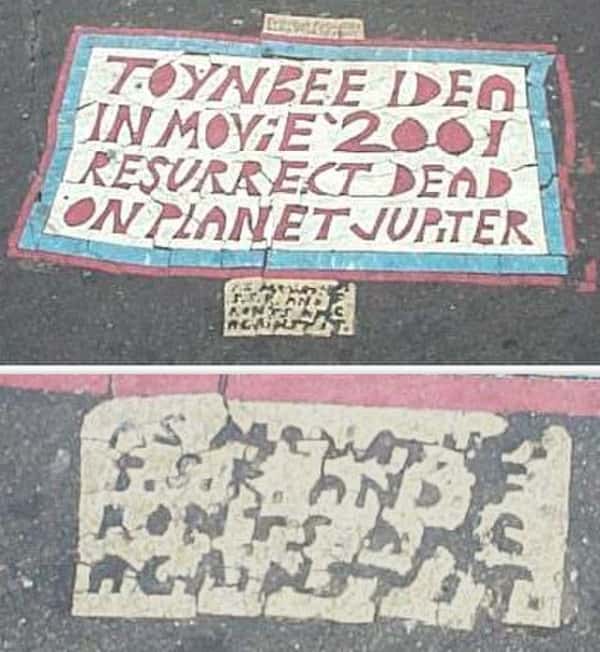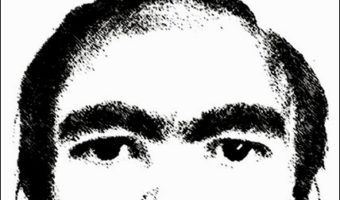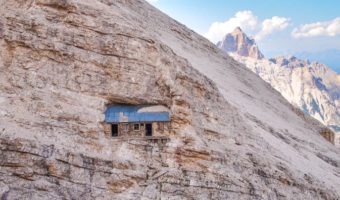The Mystery of Toynbee Tiles – Who Made Them and Why?
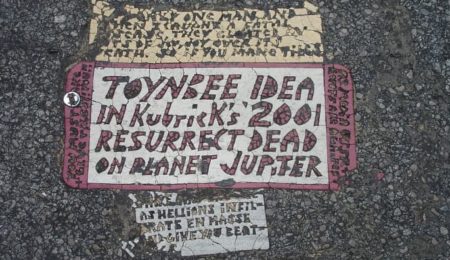
Implanted in the asphalt of the streets in more than twenty cities in the United States, as well as four cities in South America, the mysterious Toynbee Tiles with strange, cryptic messages have remained one of the most perplexing half-solved urban mysteries of the modern world. Even today, after more than forty years, no one has claimed responsibility and explained the real reason behind this bizarre occurrence.
So, what are the Toynbee Tiles? Are these carefully crafted pranks? The warning of a future apocalyptic event? Or merely street graffiti?
Let us find out what the discovery has been so far.
Table of Contents
What are the Toynbee Tiles?
The Toynbee Tiles with strange inscriptions started appearing all over American city streets in the 1980s, all the way from Boston to Kansas City, including the cities in between like Detroit, Indianapolis, Pittsburg, Toledo, Atlantic City, Washington D.C, St. Louis, New York City, and mostly in Philadelphia. These tiles appeared on busy highways, rest stops, as well as a few popular locations like Times Square and just outside the Holland Tunnel. They were also discovered in Chile, Brazil, and Argentina. Even though the tiles started to be photographed in the 1980s, documentation and articles officially started to appear in the mid-90s when interest in these tiles grew.
The messages on the tiles usually had four parts.
TOYNBEE IDEA
IN MOViE ‘2001
RESURRECT DEAD
ON PLANET JUPiTER
Sometimes, “IN MOViE 2001” would be replaced by “IN Kubrick’s 2001”. With a few exceptions, these tiles are the size of an American license plate and are believed to be made of layers of linoleum, a floor covering, and an asphalt crack-filling compound. But no one knew who made these tiles, what exactly the messages meant, and how the tiler managed to place them in such busy streets and highways without being seen.
Today, the messages on the tiles have become clearer after years of investigation by people fixated on them. But the how, the why, and the who still remains mostly unknown and merely logically speculated.
What do the messages on Toynbee Tiles mean?
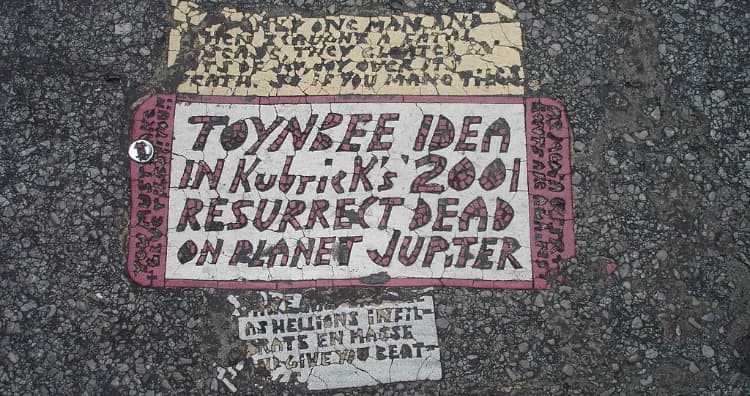
The “Toynbee Idea” reference is related to the 20th-century historian and philosopher Arnold Toynbee. He wrote about the “Toynbee idea” in his book Experiences, where he talks about how human beings may find it impossible to believe that someone who has died can come back to life again. But as per him, it is possible to be reanimated on another planet.
Another Toynbee reference may be from the famous science fiction writer Arthur C. Clarke’s short story named “Jupiter V,” which has a spaceship named Arnold Toynbee, which goes on a mission to planet Jupiter. This story also has similarities with the movie 2001: A Space Odyssey, also found referenced on the tiles.
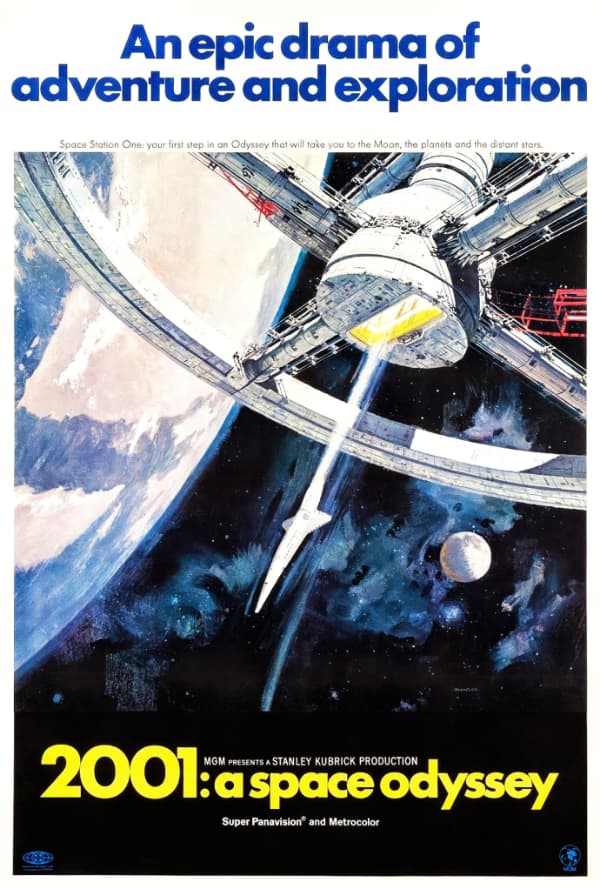
Kubrick’s 2001, or IN MOViE 2001, references Stanley Kubrick, the filmmaker behind the movie 2001: A Space Odyssey. The movie has inferences about a man reborn on a mission to Jupiter, though it did not have any direct references to being resurrected. It explores themes like human evolution, artificial intelligence, time travel, and exploring space.
“Resurrect Dead” has a call-to-action message, hinting at the possibility of resurrecting the dead “On Planet Jupiter“.
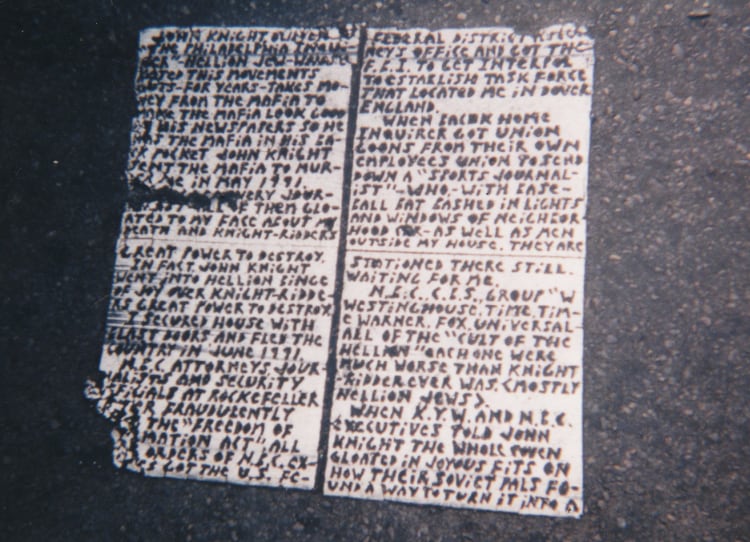
Despite the references becoming clearer, the real purpose of the messages remained a mystery and subject of multiple interpretations. Though most of the tiles were variations of the same “idea,†there were a few other messages too. One interesting tile was the “Manifesto Tile” found at the intersection of 16th S & Chestnut in Philadelphia. It is roughly 3 feet tall and contains an unusually long message, mostly of paranoia.
The clues on the Toynbee Tiles could solve the mystery.
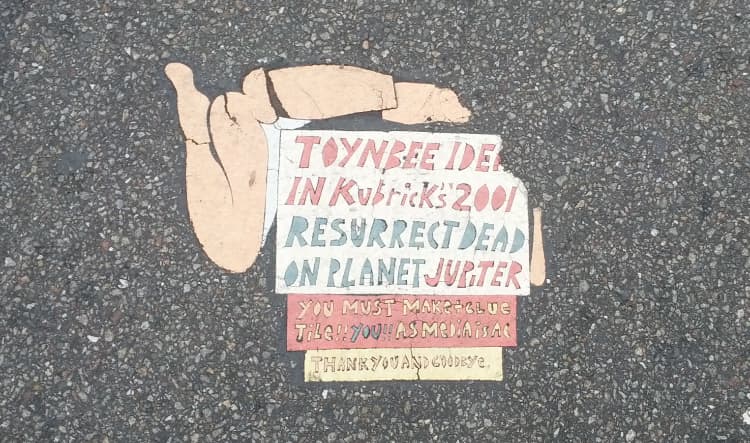
Toynbee Tile fans had three major clues to follow when trying to solve the mystery of the tiler. Justin Duerr, an artist, and musician based in Philadelphia, came across these tiles when he was just seventeen and became transfixed by the mystery. In the 2000s, when the Toynbee Tiles gained popularity in the media, two other tile fanatics, Steve Weinik and Colin Smith contacted Justin, and the three of them tried to solve the mystery together, as shown in the documentary “Resurrect Dead.”
The first and the most tangible lead was a south Philadelphia home address written on a tile found in Chile, Santiago, the first specific lead on the Toynbee tiler.
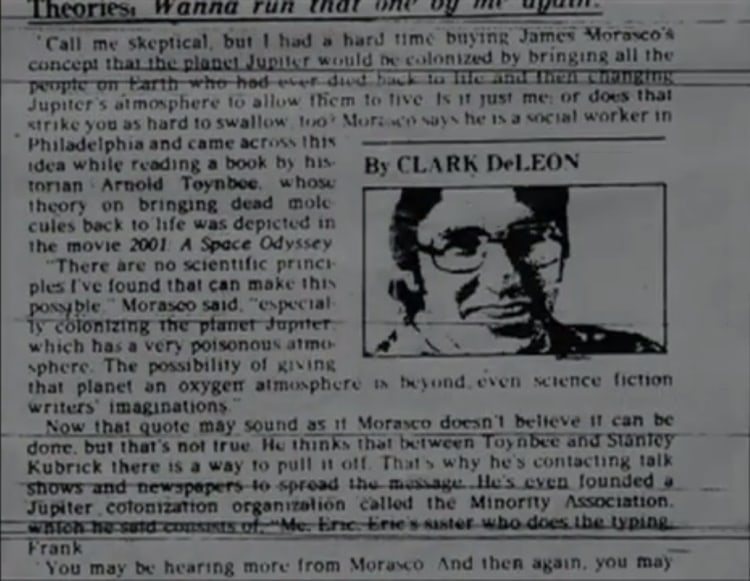
The second clue came from an article written in 1983, printed in the Philadelphia Inquirer, by columnist Clark DeLeon. This discussed a phone interview with a guy named James Morasco, who was obsessed with the idea that planet Jupiter would be colonized by bringing dead molecules back to life, which means all the people who had died on planet Earth. Morasco claimed to have founded an organization called “The Minority Association,” which had a group that believed in the same ideas and wanted to spread the message via newspapers and talk shows.
The third and last concrete clue was a one-act play written by a prestigious playwright/film director David Mamet titled “Four A.M,,” which was published around the same time the tiles started appearing. This play discusses a radio host and a mysterious caller who wants to talk about resurrecting the dead on planet Jupiter. A mere coincidence? The play also has an uncanny resemblance to the other inscriptions on the tiles and even mentions Arnold Toynbee in the movie 2001: A Space Odyssey.
What did the Toynbee clues reveal?
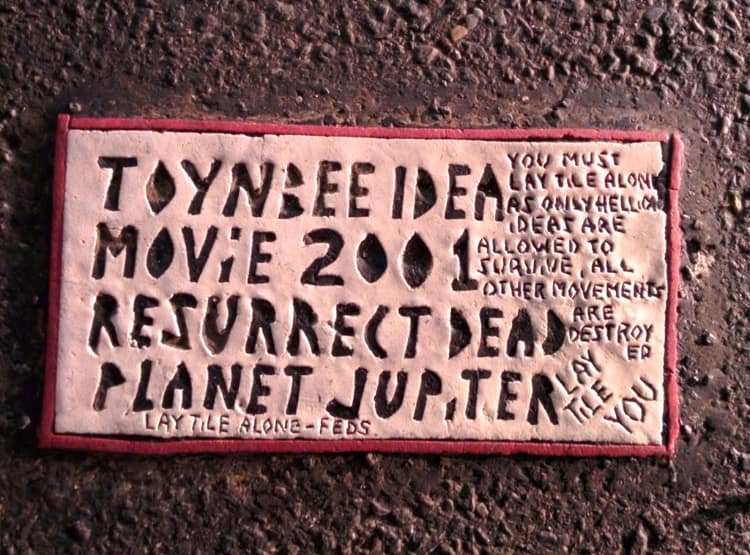
Clue 1: The address found on the tile:
The row house address in South Philadelphia was heavily padlocked, and no one answered the door. The neighbors said that the person who lived at that address was a recluse called Sevy Verna. He hardly socialized and normally left the house mostly after midnight to avoid people. Despite repeated attempts to meet him or talk to him, they were unsuccessful.
But they finally could speak to his mother on the phone, who told them her son was harmless and had a lung problem, which is why he could not travel anywhere. But whoever the tiler was actually had to travel extensively throughout the country to place the tiles, and probably even South America. This dismissed Sevy Verna from being the suspected tiler for the time being.
The neighbors also mentioned Julius Piroli, nicknamed “Railroad Joe,” who used to live in the same address till the mid-80s and worked for Conrail Railroad. Interestingly, the Conrail passed through exactly the same cities where Toynbee Tiles have been discovered. In fact, the tiles were discovered exactly along the stretch where the Conrail traveled and not any further. They even found an article that mentioned a giant telescope that was getting shipped in parts by Conrail to Chile, where the tile with the address was found. In fact, the article also mentions Julius Peroli, the track foreman, by name. Peroli, working in the Conrail, having the scope to travel to all the tile cities, especially at night, and living in the same address at one point – this made him a probable suspect.
But they found out that Railroad Joe died in 1987, which quickly ruled him out of the suspect list since many of the tiles were placed after that year.
Clue 2: James Morasco and the Philadelphia Inquirer.
The second clue, too, led to a dead-end. James Morasco had called up Clark De Leon in 1983 to talk about the same ideas as found on the tiles. This was a real, tangible clue that could directly lead to a suspect. They looked up the directories from 1983 and found that the only James Morasco listed there was too old to be the tiler. Based on his age then, they figured that when the tiles were placed, he would have been in his seventies or eighties. Also, according to his wife, he had no interest in tiles or Jupiter. James Morasco was ruled out too, but this still didn’t explain the strange telephone call De Leon had with the person who identified himself as James Morasco.
Clue 3: Mamet’s Play “Four A.M.”
While investigating the play, Mamet dismissed any connection and said it was the “weirdest thing that ever happened” and that the play was completely fictitious. Though published two years later, in 1985, he wrote the play in 1983, the same year the Philadelphia Inquirer published the article. Therefore, though seemingly coincidental, the two have a connection to the mystery, to be revealed later.
Conspiracy theories, a TV broadcast, yet another clue.
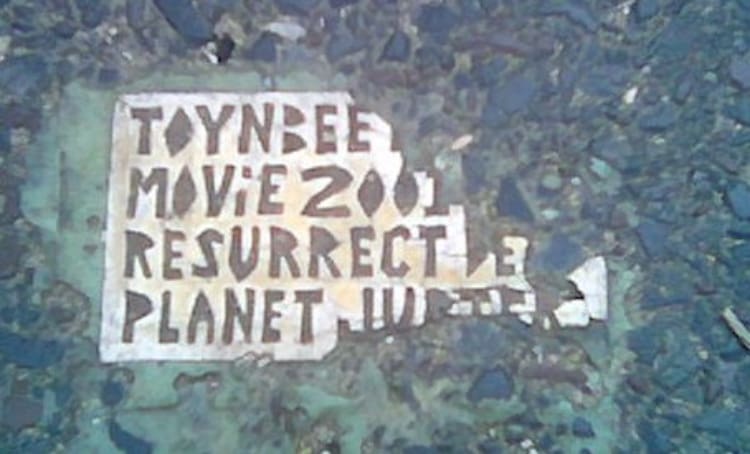
In 2006, Toynbee.net webmaster Bill O’Neil gave access to all e-mail messages, photos, and materials spanning 1999-2006 to the Toynbee investigators. A lot of conspiracy theories emerged throughout the years from all the people who believed they had solved the Toynbee Tiles mystery. From secret societies to art dealers, from aliens to 9/11 conspiracies, the theories were plenty. But apart from these theories that could be dismissed quickly, other facts also came to light.
There was one interesting email from Joe Raymondo, who claimed that in 1985 when he lived in Philadelphia, there was a mysterious broadcast on the TV about the “Toynbee Idea†that interrupted the 11 o’clock news on Channel 3. As per him, someone had hijacked the transmission for some time. This revelation would prove to be extremely helpful in piecing together the mystery.
The Toynbee Tiles documentary attributed the tiles to a reclusive Philadelphia resident.
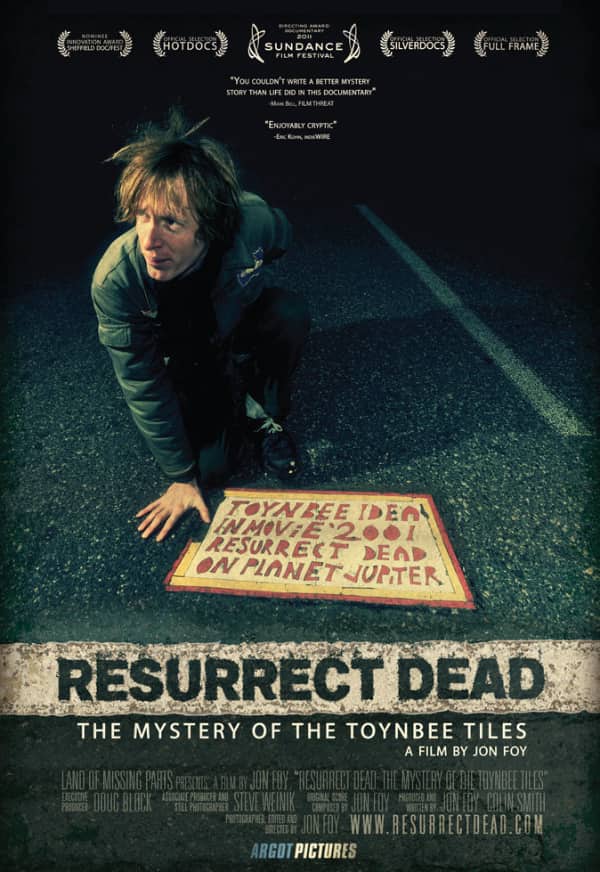
Justin Duerr, in the award-winning documentary “Resurrect Dead” by Jon Foy, attributed the tiles to Severino “Sevy” Verna, the recluse whose address was inscribed on one of the tiles found in Chile, South America. Justin’s team had earlier tried to talk to him without success. After the probability of him being the tiler increased, they tried to contact him again. But his door still remained heavily padlocked, and he wouldn’t open it even when it looked like he was home.
But all around the house, prototype tiles were found, lying about, with random letters plastered onto the pavement below. It looked like a testing ground for the tiles. This discovery definitely increased their suspicion.
Neighbors described him as an intelligent, paranoid, reclusive person who mostly kept to himself. But another interesting revelation was made by a neighbor who said that Sevy’s car had the floorboard taken out from under the passenger seat. Strange? But as per Justin, this could exactly explain how he could just drop the tiles directly from his car, on busy highways or other streets, stealthily, without ever having to get out of the car – and why hardly anyone ever saw the tiler live at work!
The neighbor even told them that his car had an antenna on the roof, and their TV transmission would flicker when he would drive his car past. This could explain how he could interrupt the local Channel 3 news to spread his Toynbee Idea message.
Justin explains Morasco, the short-wave radio story, and Verna.
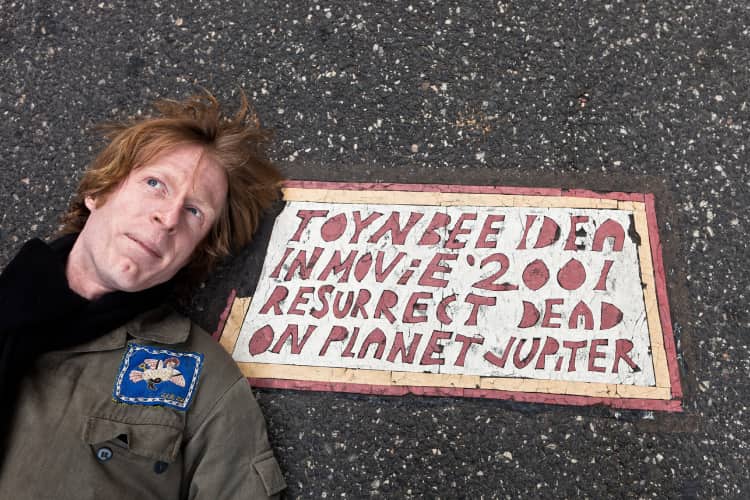
During the investigation, ham-radio buffs reported that years ago, there was a broadcast message via short-wave radio about the Toynbee theories. But no one could remember anything about it. After further investigation, they spoke to a man in Philadelphia who remembered the short-wave radio message. When Justin tried to jog his memory with names and mentioned Severino and Sevy, he finished that sentence by saying, “Verna.” He did remember this name. Everything clicked.
In the documentary, Justin stated that he believes Sevy himself used an alias “James Morasco” and contacted talk shows and newspapers to talk about his theory of colonizing Jupiter with the dead inhabitants of Earth, claiming to have come across the idea while reading a book by historian Arnold Toynbee.
They became almost certain that Sevy Verna was the tiler they had been looking for. But despite repeated efforts and emails, Sevy did not respond or show any interest in communicating.
A probable brief timeline of the Toynbee Tiles mystery.
Here is a timeline of what Justin, Steve, and Colin deduced was the story behind the Toynbee Tiles. Maybe around 1979, Sevy discovered the afterlife theories of Toynbee and saw the movie 2001: A Space Odyssey (1968). He connected with the ideas and believed his mission was to tell the world to find a way to raise the dead on planet Jupiter. Around 1980 (at 4 a.m.?) he called “The Larry King Radio Show, under the name James Morasco and shared his Toynbee idea for the first time. Playwright Mamet was listening.
Then Verna started spreading his message between 1980-1983 to the media, still under Morasco’s name to channels on NBC, CBS, and to John Knight, the owner of the Philadelphia Inquirer, but he was rejected and ridiculed by all except Clark DeLeon, who published this strange idea in 1983. Rejected by the media, Verna tried other sources like short-wave pirate radio from his car and pamphlets. Then, Mamet wrote his play, forgetting where he got the idea from – “The Larry King Show.”
Around this time, tiles began appearing across multiple cities and finally started to get attention. In 1994 Justin saw his first tile and got hooked on the mystery. In 2006, his team solved the mystery through clues and evidence, though they never got confirmation or got to talk to who Justin believed was the tiler. His last letter to the tiler, written with a lot of anticipation, never produced a reply.
About the mystery of the Toynbee Tiles, filmmaker of ” Resurrect Dead,” Jon Foy, reflects that in today’s age of information, it is somewhat gratifying to believe that there are still shadowy crevices in the world where magic, imagination, and perplexity can still exist!
Share this with your friends!
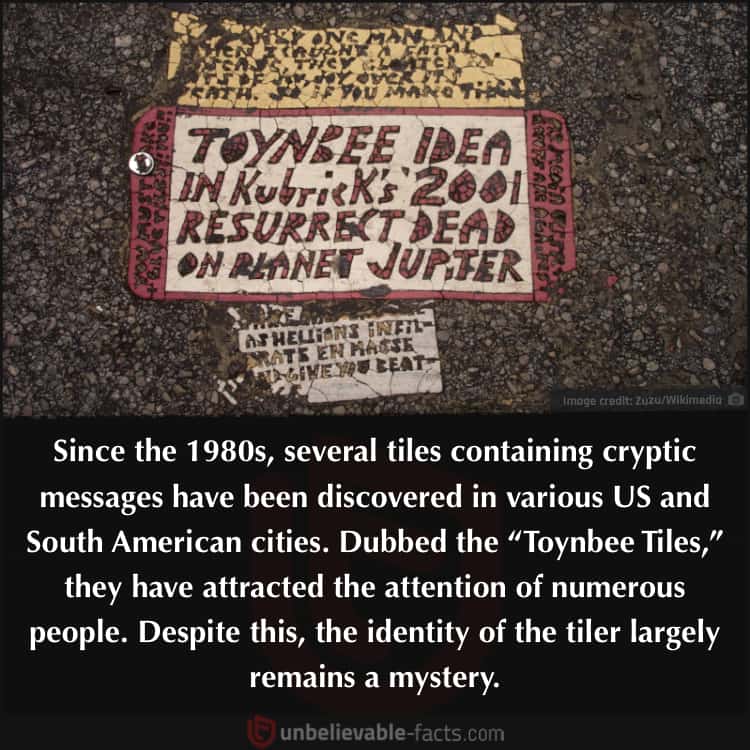
10 Mysteries from the Past that Were Solved in Recent Times














